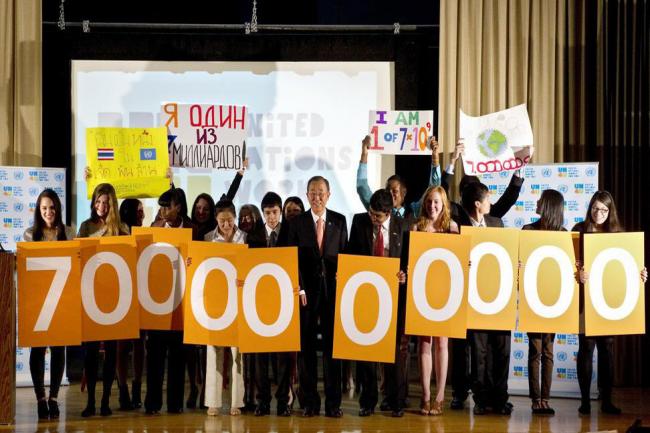
UN projects world population to reach 8.5 billion by 2030
Moreover, the report reveals that during the 2015-2050 period, half of the world’s population growth is expected to be concentrated in nine countries: India, Nigeria, Pakistan, Democratic Republic of the Congo, Ethiopia, Tanzania, the United States, Indonesia and Uganda.
Wu Hongbo, the UN Under-Secretary-General for Economic and Social Affairs, whose department produced the 2015 Revision of World Population Prospects, the 24th round of official UN population estimates and projections.
He noted that understanding the demographic changes that are likely to unfold over the coming years “is key to the design and implementation of the new development agenda.”
United Nations Member States are currently in the process of crafting a successor agenda to the landmark Millennium Development Goals (MDGs), which wrap up at the end of this year.
A new framework, focused on poverty eradication, social inclusion and preserving the health of the planet, is set to be adopted at a special UN summit, in New York this September.
According to the report’s projections, the current world population of 7.3 billion is expected to reach 8.5 billion by 2030, 9.7 billion in 2050 and 11.2 billion in 2100.
“Most of the projected increase in the world’s population can be attributed to a short list of high-fertility countries, mainly in Africa, or countries with already large populations,” according to the report.
At present, China and India remain the two largest countries in the world, each with more than 1 billion people, representing 19 and 18 per cent of the world’s population, respectively, but by 2022, the population of India is expected to surpass that of China, according to the report’s projection.
Among the 10 largest countries in the world currently, one is in Africa (Nigeria), five are in Asia (Bangladesh, China, India, Indonesia, and Pakistan), two are in Latin America (Brazil and Mexico), one is in Northern America (US), and one is in Europe (Russian Federation).
“Of these, Nigeria’s population, currently the seventh largest in the world, is growing the most rapidly,” said the report.
Consequently, the population of Nigeria is projected to surpass that of the United States by about 2050, at which point it would become the third largest country in the world.
The report also projected that by 2050 the populations of six countries are expected to exceed 300 million: China, India, Indonesia, Nigeria, Pakistan, and the United States.
And with the highest rate of population growth, Africa is expected to account for more than half of the world’s population growth over the next 35 years.
During this period, the report said, the populations of 28 African countries are projected to more than double, and by 2100, 10 African countries are projected to have increased by at least a factor of five: Angola, Burundi, Democratic Republic of Congo, Malawi, Mali, Niger, Somalia, Uganda, United Republic of Tanzania and Zambia.
“The concentration of population growth in the poorest countries presents its own set of challenges, making it more difficult to eradicate poverty and inequality, to combat hunger and malnutrition, and to expand educational enrolment and health systems, all of which are crucial to the success of the new sustainable development agenda,” said John Wilmoth, Director of the UN’s Population Division.
In contrast to the growth projections, a significant ageing of the population in the next several decades is projected for most regions, starting with Europe where 34 per cent of the population is projected to be over 60 years old by 2050.
In Latin America and the Caribbean and in Asia, the population will be transformed from having 11 per cent to 12 per cent of people over 60 years old today to more than 25 per cent by 2050.
Further to the report, life expectancy at birth has increased significantly in the least developed countries in recent years. The six-year average gain in life expectancy among the poorest countries, from 56 years in 2000-2005 to 62 years in 2010-2015, is roughly double the increase recorded for the rest of the world.
While significant differences in life expectancy across major areas and income groups are projected to continue, they are expected to diminish significantly by 2045-2050.
Photo: UN Photo/Eskinder Debebe
Support Our Journalism
We cannot do without you.. your contribution supports unbiased journalism
IBNS is not driven by any ism- not wokeism, not racism, not skewed secularism, not hyper right-wing or left liberal ideals, nor by any hardline religious beliefs or hyper nationalism. We want to serve you good old objective news, as they are. We do not judge or preach. We let people decide for themselves. We only try to present factual and well-sourced news.







